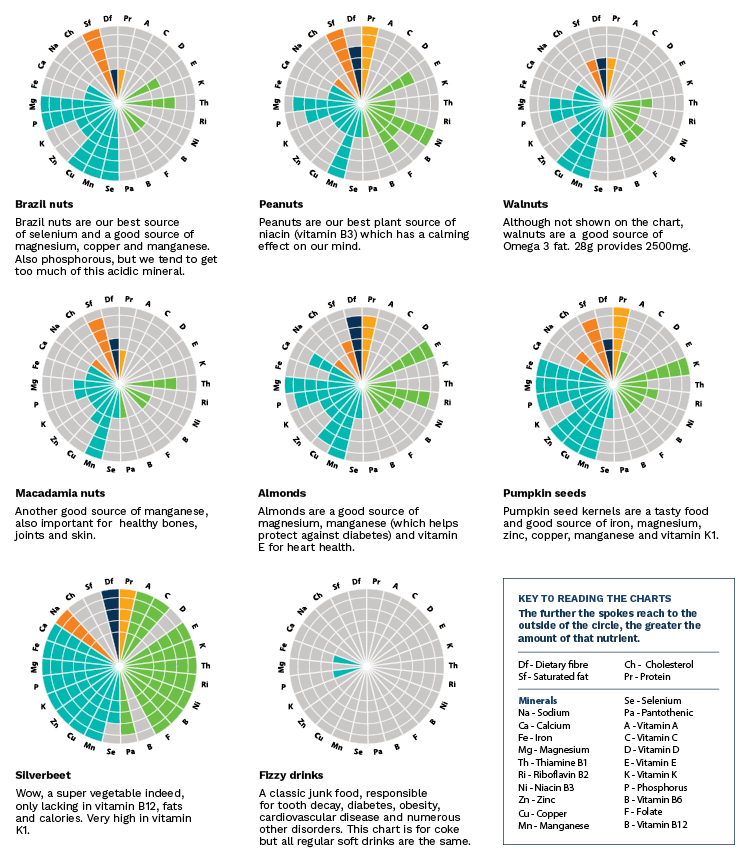Over the Christmas and New Year eating period, like most of us, I tend to eat more nuts than normal.
But are nuts good for us? Do they contain all the nutrients we need? Could we survive on them alone?
Some years ago, a lady customer emailed me asking if I could advise her on the nutritional soundness of her daily diet, which was mostly a variety of seeds and nuts. I was happy to do so.
Here’s what she told me she was eating each day – two large handfuls of a mix of sunflower seeds, pumpkin seeds, hazelnuts, almonds, walnuts and brazil nuts. Also one handful of pecan nuts, pine nuts and pistachio nuts. (She also took our Optimum Health Triple Pack and Colostrum.)
This was an interesting exercise for me as I eat a brazil nut and walnut every day (with a date) and other days I choose between pumpkin seeds, peanuts, sunflower seeds and a supermarket mix of hazelnuts, almonds and cashews. All are roasted and salted except for the brazil nut. (I love salted nuts and seeds but have had to halve my intake this year as I was gaining too much weight.)
High in minerals and protein
So I looked up the nutrition profiles for all these nuts and seeds for our customer and she was fine for minerals and protein. The nuts and seeds vary quite a lot from one another in nutrition, but when a variety of them are eaten they provide a good balance of minerals and proteins.
However, some important vitamins were missing and if she had not been taking our Optimum Health Triple Pack she would need to include vegetables for the missing vitamins and some animal protein for B12. Also some summer sunshine on her bare skin for vitamin D.
To give you a better idea of all this, I’ve reproduced diagram charts of most of these nuts and seeds here. (The nuts and seeds are all roasted and salted, except for the brazil nuts.)

How to read the diagram charts
The diagram charts look a little confusing at first, but they’re simple to read when you get the hang of it.
The spokes in the circles, one for each nutrient, shows the amount of that nutrient each food provides. The further the spokes reach to the outside edge of the circle, the greater the amount of that nutrient.
The KEY TO READING THE CHARTS box tells you what the code letters mean. Minerals on the left and vitamins on the right –e.g. Mg stands for Magnesium.
As you’ll see, minerals and proteins are well supplied by nuts and seeds, but they all lack the vitamins A, C, D, K1 and K2 – these need to be supplied by vegetables.
If you look at the second to last diagram, the one for silverbeet, you can see how a good vegetable makes up for the lack of vitamins, except for B12 and D. Vitamin B12 needs to be supplied by eggs, dairy or meat and vitamin D by summer sunshine on the skin.
For a striking contrast in nutrition, compare the final diagram for fizzy soft drinks.
About the Author

David Coory - Founder of Health House. Author
of Stay Healthy by supplying what’s
lacking in your diet, New Zealand's
top selling health book.